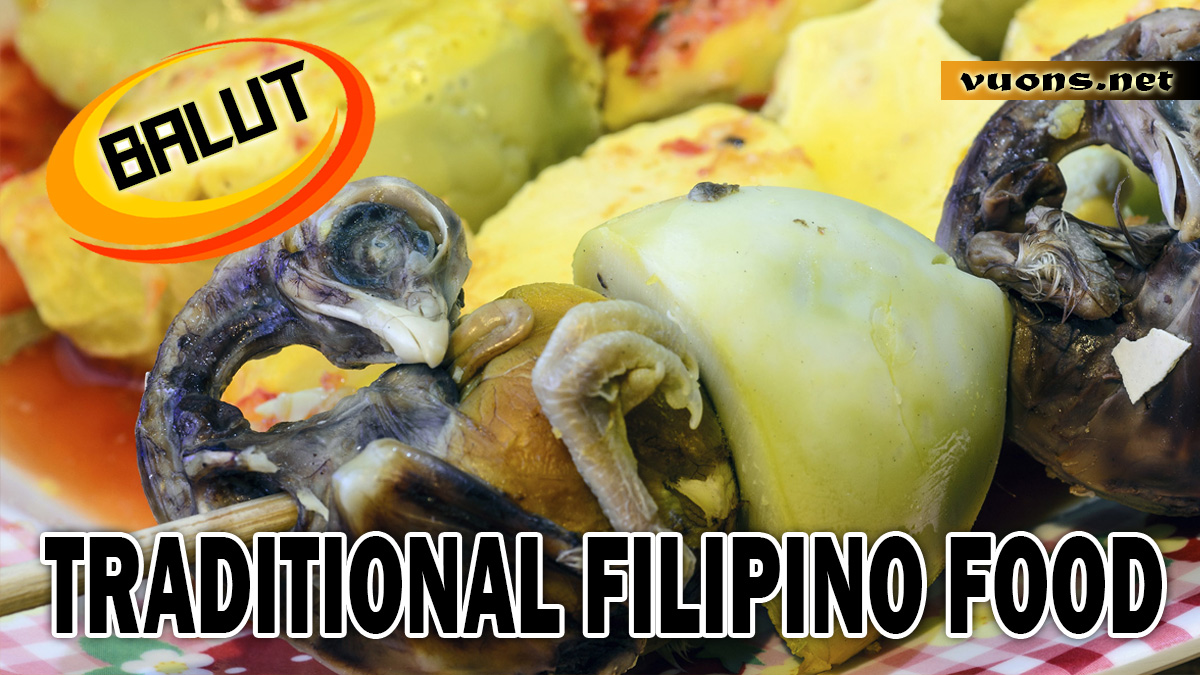Balut: Interesting Facts You Need to Know
The History of Balut: From Tradition to Culinary Trends
Balut is a famous and controversial traditional Filipino Food. Balut is a duck egg that has developed into an embryo, then boiled and eaten with the shell. Despite the horror of many, Balut has a long and important history in Filipino culture.
The history of Balut begins with an ancient tradition originating from China. Fermented duck eggs have been a food in China for centuries, and Chinese immigrants brought the tradition to the Philippines in the 17th century. In the Philippines, Balut is a popular snack that can be found at night markets and street vendors.
Balut is not just a food, it is also part of Filipino tradition and culture. Balut is often served at various celebrations and special events. In fact, eating Balut is often considered a test of courage for tourists visiting the Philippines. Its unique taste, the combination of rich egg yolk and tender embryo flesh, makes this culinary experience unique and unforgettable.
In recent decades, Balut has gained international attention. Culinary shows and documentaries often feature Balut as one of the extreme foods that must be tried. This popularity has helped increase awareness and appreciation for traditional Filipino food throughout the world.
However, Balut has also faced controversy, especially regarding ethical issues and animal rights. Some people consider it a cruel food, while others see it as an important part of cultural heritage that should be preserved.
The History of Balut: From Tradition to Culinary Trends, reflects how food can connect the past with the present. While Balut may not be for everyone, it is important to understand and respect the cultural and historical background behind each dish. Balut remains a symbol of the diversity and richness of Philippine cuisine, which continues to attract the attention and curiosity of the world.
Nutritional Content and Health Benefits of Balut
A traditional Filipino food consisting of duck eggs with barely cooked embryos, is not only known for its unique and distinctive taste but also for its rich nutritional content. Although controversial, Balut offers a variety of health benefits that are worth noting.
Balut is a high source of protein. Each Balut contains about 14 grams of protein, making it an ideal snack for those who need additional protein intake. The protein in Balut helps repair body tissue, build muscle, and supports the immune system.
Apart from protein, Balut is also rich in vitamins and minerals. Vitamin A in Balut is important for healthy eyes, skin and immune system. Balut also contains vitamin C which plays a role in strengthening the immune system and increasing iron absorption. Vitamin B2 (riboflavin) contained in Balut helps in energy production and cell metabolism.
Balut also contains iron and phosphorus. Iron is necessary for red blood cell production and preventing anemia, while phosphorus supports healthy bones and teeth. The calcium content in Balut also helps strengthen bones and teeth, and supports muscle and nerve function.
The collagen contained in Balut is beneficial for healthy skin, hair and nails. Collagen also helps speed up wound healing and maintain skin elasticity.
Although Balut has many health benefits, it is important to consume it wisely. The cholesterol content in Balut is quite high, so those who have cholesterol problems or heart disease should consume it with caution.
The nutritional content and health benefits of Balut make it a food that is not only unique but also has high nutritional value. Understanding the nutritional content of Balut helps us appreciate this traditional food more deeply, while gaining the health benefits it offers. Balut is an example of how traditional foods can provide significant health benefits in a modern diet.
Controversy and Perception of Balut
Although popular in the Philippines and some Southeast Asian countries, Balut often sparks heated debates regarding ethics, culture and personal preferences.
The main controversy surrounding Balut relates to ethical issues. For many people, the idea of consuming barely mature duck embryos is considered inhumane and disgusting. Animal rights groups often criticize this practice, considering it a form of animal cruelty. They argue that the manufacturing method is unethical and causes suffering to duck embryos.
Additionally, perceptions of Balut vary widely across cultures. In the Philippines, Balut is a revered food and an important part of their culinary heritage. Many Filipinos see Balut as a delicious and nutritious food, as well as part of a tradition that should be preserved. In fact, Balut is often considered a test of courage for tourists visiting the Philippines.
Outside Southeast Asia, Balut is often seen as an exotic and challenging extreme food. International culinary events often feature Balut as an example of an unusual and curious food. However, many people in the West are disgusted or uncomfortable with the idea of consuming Balut, reflecting cultural differences in food and ethics.
The Controversy and Perception of Balut reflects how food can be a point of meeting or difference between cultures. Although Balut triggers a variety of reactions, it is important to understand and respect the underlying cultural background. Balut is a symbol of the world’s culinary diversity, showing how culinary traditions can influence people’s perceptions and values. Understanding this controversy helps us better appreciate the complexity and rich culture behind each dish.
Balut Variants: New Culinary Innovations and Creations
Balut variants are now increasingly popular, both among local and international communities. This innovation starts with a different way of serving, such as fried Balut which provides a crunchy texture on the outside but remains soft on the inside. Balut can also be found grilled or grilled, adding a distinctive smoky flavor.
Apart from different cooking methods, Balut is also starting to be modified with the addition of spices and sauces. For example, Balut with spicy sauce or Balut served with typical Southeast Asian spices to provide a more complex and layered taste. This innovation makes Balut more appealing to those who may be less familiar or reluctant to try the traditional version.
New culinary creations with Balut are also seen in the world of fusion food. Some creative chefs have integrated Balut into more modern and international dishes. An example is Balut sushi, where Balut is served in a sushi roll with rice and seaweed. There is also the Balut burger, where Balut is used as the main patty, providing a truly unique eating experience.
Outside the Philippines, Balut has also found a place on the menus of exotic and gourmet restaurants, where chefs try to combine traditional elements with modern cooking techniques. This not only promotes Balut as an exotic food but also as an ingredient that can be processed into luxury dishes.
Balut Variants: New Culinary Innovations and Creations shows how traditional food can evolve and adapt to modern tastes without losing its cultural essence. These innovations help keep Balut relevant and appealing to new generations, while still honoring the rich culinary heritage of the Philippines.




